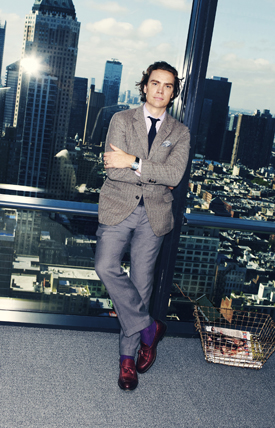I have been an invited interloper in the fiefdoms of the decimal-pointed rich long enough now to know that when rich men want to distinguish themselves from other rich men they buy art. Among practitioners of modern-day social one-upmanship this is hardly new. The nouveaux riches of the Gilded Age were the first Americans to discover the class-enhancing power of nailing a Titian above the mantel. But those robber barons were different from ours in a very important way: To those less formally educated, more red-bloodedly capitalist men, art was a way to wash themselves clean, to refine their own taste and that of their fellow citizens, and in that way to share some of the vast wealth that had been made by the few in disproportion to the many.
There are, to be sure, still sterling examples of amateur connoisseurs who spend the lifetime and personal fortune it takes to put together a first-rate collection and then generously decide to give it away. Leonard Lauder's recent bequest to the Metropolitan Museum of Art of 78 important Cubist works, estimated to be worth more than a billion dollars, sets a high bar for future Olympic collectors with philanthropic ambitions.
It is perhaps a bit premature to read too much into the record-breaking November auctions at the New York branches of Sotheby's and Christie's, which, in combined gavels, raked in more than a billion dollars. But what is clear is that against the elegant backdrop of such noblesse oblige is a growing breed of money changers whose idea of cultural enrichment involves buying and selling works of art as if they were trading them on the New York Stock Exchange. A tableau vivant of those who attended the auctions, for instance, would include a brass-knuckled hedge fund manager who is himself a collector and is currently agitating for bigger profit margins at Sotheby's; a member of an international family of textile tycoons who instead of adding to a hoard of some 800 Warhols flipped one at Christie's for $57.2 million; and an uptown gallerist indicted for running a gambling ring connected to the Russian mob who hid behind the one-way glass of the newly built VIP "skybox" at Christie's. "I am a collector," Mike Ovitz is reported to have said upon taking in the scene, apparently with disgust. "This is not about collecting."
The news of Francis Bacon's three-part study of Lucian Freud going for a record $142.4 million isn't what makes me think there's a bubble, though clearly there is one -- and has been one for years. It was something much more disturbing: the realization that a comment Gordon Gekko made has come true on a scale grander than even he, in all his lacquer-haired rapaciousness, could have dreamed. "This painting here," Gekko coldly boasts in his corner office in Wall Street, "I bought it 10 years ago for $60,000. I could sell it today for $600,000. The illusion has become real, and the more real it becomes the more desperate they want it."
It was the auction results of our own era's Gordon Gekko, Steve A. Cohen -- the founder of SAC Capital Advisors, who recently pleaded guilty to securities fraud -- that made me realize this. Among a handful of other pieces, Cohen had consigned Gerhard Richter's 1986 A.B. Courbet. The painting, a colorfully scratchy giant abstract (which, according to the New York Times, was bought by Cohen in 2012 for around $20 million), ended up going for $26.5 million, earning Cohen a return of 32.5 percent, an even higher margin than the whopping 25 percent his vaunted hedge fund once averaged. With gains like that to be had, perhaps Cohen has discovered the last great, unregulated game of high stakes gambling outside Las Vegas, one being played in broad daylight.
Read more here.